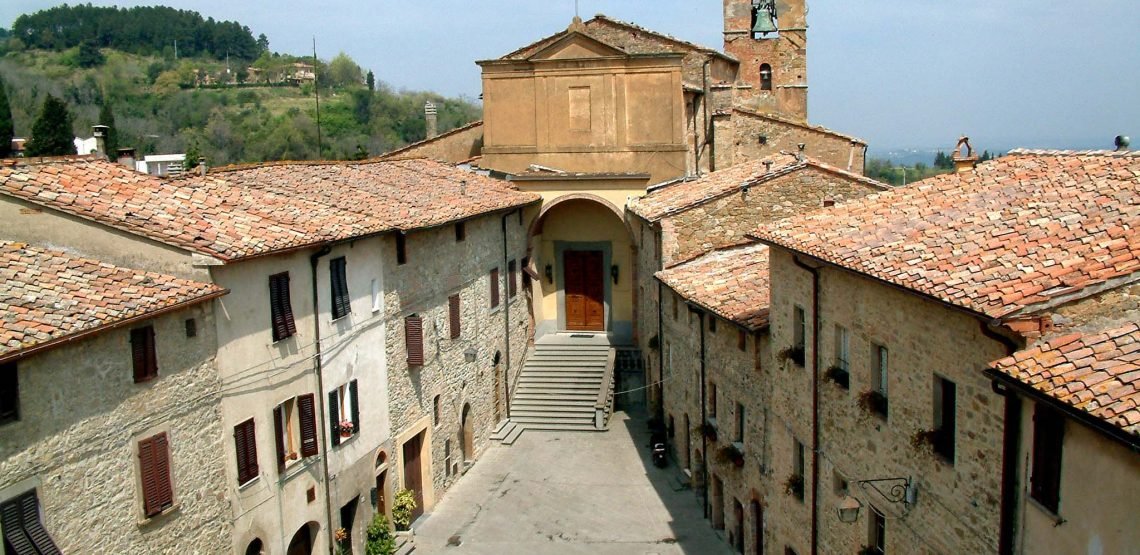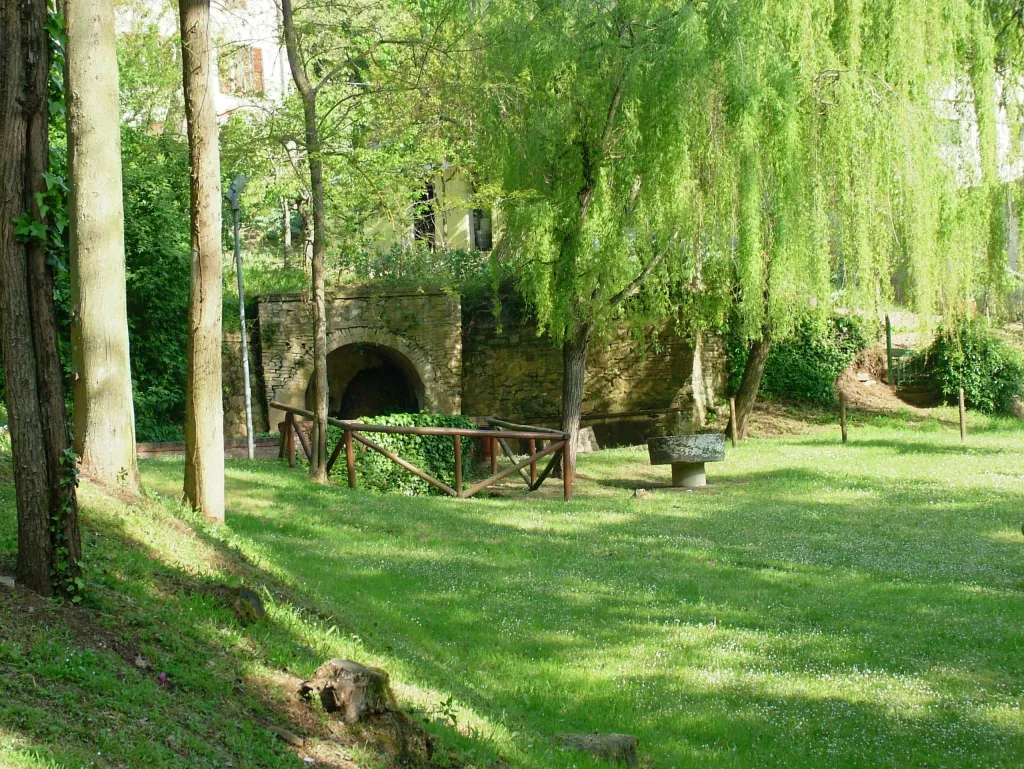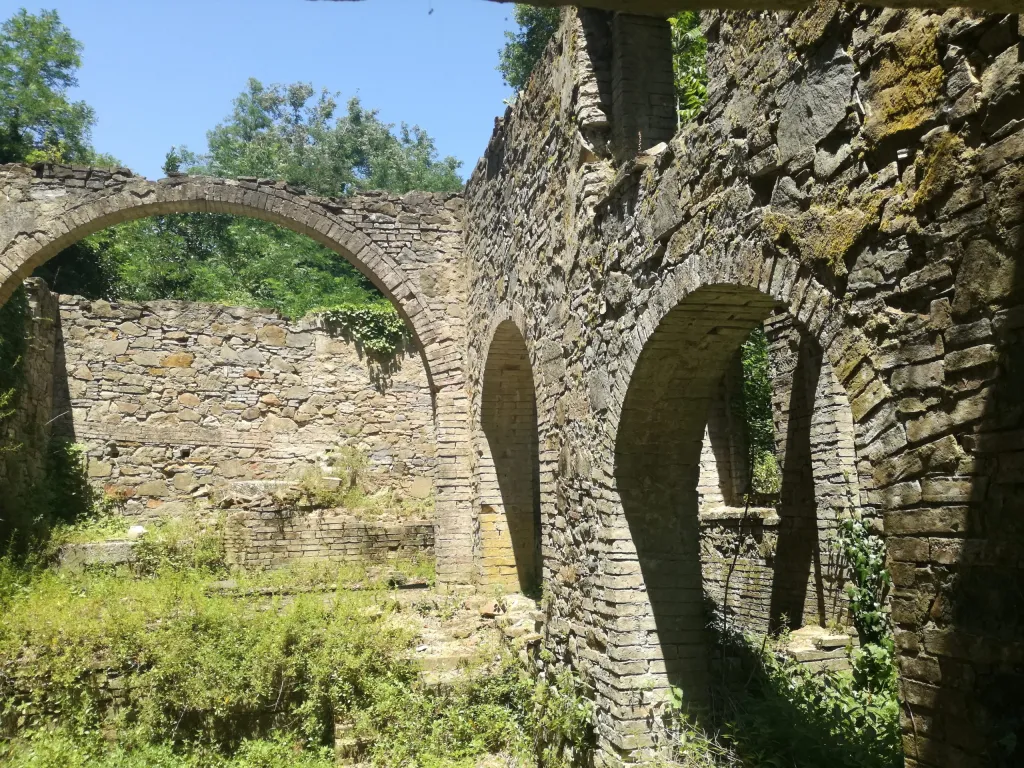GUIDED TOURS
Getting around Chianni and its surroundings.
Either alone or with guided tours, the opportunity to explore and discover the beauties of Hidden Tuscany with the pleasure of discovering places and itineraries that will amaze you with their uniqueness and beauty.
Guided Tour of Chianni
Every Monday morning, from June to September, the Proloco of Chianni provides a tourist guide for a guided tour along the streets of Chianni and the points of greatest interest.


The tour, in Italian and English, includes:
- Detailed explanation of the local art, customs and traditions of Chianne
- visit to an ancient cellar and the remains of the town's water mills,
- visit to the church in the ancient castle area and the suggestive underground church,
- tasting of local products at the typical shops in the town,
- possibility of extending the tour with a visit to the small village of Rivalto, at the cost of a small extra

This tour is organized by the Municipality of Chianni, in collaboration with Arianna&Friends, a local tour operator, and the Tourist Office of Chianni. For information 0587 647479, prolocochianni@gmail.com (Tourist Office)
Photo Tour with Mr. Roy
An experience dedicated to all photography enthusiasts, led by Mr Roy Mason, an English photographer, who moved to Rivalto dedicating himself to country life and welcoming his guests.
“ Have you ever wanted to improve your photography skills?
I can offer a half day or a full day photography course. The course is specially tailored to each individual and the group size is limited to a maximum of 4 or 5 people.
We are blessed with fantastic scenery around Rivalto and Chianni. The course is designed to help people take more professional pictures, as well as getting to know your camera, if that is required.
For those who require the use of a camera, a DSLR is available to borrow for the duration of the course.
Twenty-four hours is usually required prior to running the course as this allows the course to be tailored to the needs of the photographers.
Based on an initial discussion, the following aspects can be addressed, but is not limited to:
A tour, in English, customized according to the needs of aspiring photographers.
- Composition
- Framing the shot
- White Balance
- Colour Temperature
- Focal Length
- ISO
- Black and white photography
A half day course lasts 3 hours and 30 minutes and includes feedback on the shots taken. A full day consists of 7 hours.
Transport can be provided to local locations to experience different views and compositions.
All sessions come with written notes to accompany the course on the subjects coveredCost
- Half Day 40€/person
- Full Day 70€/person
Half day courses can be am or pm.
Sunrise or sunset photography can be arranged by appointment.
Please contact me for further details Roy Mason : rmason8@gmx.com
NON-ORGANIZED INTEREST ITINERARIES WITH TOURS
The path of the mills
The source of the Pescaia
Until the mid-1800s, wayfarers who wanted to enter Chianni from the lower Valdera were almost forced to travel along a narrow road that went down from Rivalto to the San Donato stream, where a small bridge – perhaps of medieval origin – allowed them to enter the town. As in many other towns in central Italy, wayfarers were greeted by one or more fountains, which served not only to quench the thirst of foreigners, but also of the women of the town, who went to fetch water with the classic jugs rigorously carried above their heads. Of the two fountains present until the mid-19th century, only the “Pescaia” fountain remains intact and clearly visible.

Dating back perhaps to the 17th century, but certainly remodeled over the centuries, it still retains the classic brick arch and the original lateral mouths, from which water could be drawn from the springs in the mountains above the center of Chianni. A photograph from 1926 shows some women of the village returning from the source, carrying on their heads large jugs full of freshly drawn water. In the immediate vicinity there were also some brick wash houses, large tubs where women came to wash their dirty clothes, unfortunately demolished on several occasions in the second half of the 20th century. Today the Pescaia source is no longer active, but it remains a charming garden thanks to the rich vegetation near the S. Donato stream, which makes this small park an oasis of refreshment from the summer heat, ideal for spending time with children. The park is also available for civil weddings. Near the fish pond, on the S. Donato stream, the remains of some buildings, used as oil mills and mills, are visible. In 2014, a group of volunteers began work to recover the architectural remains, bringing to light a historical heritage, buried by vegetation and bricks.
The Mills
To ensure optimal performance for their water mills, the Counts Rasponi – Spinelli, who had purchased a large part of the Chiannerino territory, decided – between the end of the 18th and the beginning of the 19th century to revive the depressed economy of the area, after more than a century of mismanagement by the Marquises Riccardi. Together with the construction of roads, new farmhouses, fountains and whatever was necessary for the farm, it was decided to build two new structures in the initial part of the San Donato stream, upstream therefore of the existing mills; : They were probably built on existing buildings or in any case exploiting their walls. Under the Pescaia fountain and its wash houses, a grandiose oil mill was built with a vaguely quadrangular plan, divided into two floors and with a gabled roof. The Leopoldino Land Registry of 1821 clearly indicates the existence of this structure already in this period, allowing us to reconstruct its perimeter and that of the annexed structures. Instead of the classic horizontal wheel or “ritrecino” used in the underlying mill B or “Tettone”, here the new and modern vertical wheel with cassettes was chosen, turned by means of a jet of water coming from the overlying millrace of considerable size with a “acquitognolo”, that is, a pipe partly in masonry, partly in wood that made the water fall onto the wheel's cassettes. It was a quality investment that would bear fruit in the years to come. The wheel, turning, activated the large metal and wooden stars which in turn activated the vertical mills for crushing olives; : On the walls, in addition to the tiles for storing oil and the fireplace, essential for dissipating humidity, there were cast iron presses for pressing the pomace, of which the worked stone bases still remain today. The invention and use of electricity led to the progressive decline of this structure from the 1930s onwards. Having fallen into disuse around the 1940s and used during the Second World War as accommodation for American soldiers, within fifty years abandonment, its exploitation as a quarry to extract stone and bricks and general carelessness have caused such serious damage that it is no longer possible to safely reconstruct its elevation. Downstream from the more recently built mills, after passing a series of natural waterfalls – almost always artificially regulated by the construction of brick bridles with the aim of slowing down the speed and therefore the erosion of the water – we can see small buildings among the vegetation, generally buildings measuring no more than 6 by 8 metres. These are family-run mills, divided into two floors. floors, hell, or the room on the ground floor or slightly underground where the horizontal wheel and a small room above were located,generally accessible by an external staircase, where even today – almost completely immersed in rubble – the millstones can be seen. The use of the horizontal water wheel – due to its low production yield and the minimal amount of energy produced – was absolutely incompatible with commercial flour production but was more than sufficient for grinding cereals for consumption by local peasant families: the small water mill became almost a symbol of peasant civilization and its productive self-sufficiency. These mills were very often owned by rich local families, who could rent or grant the use of the mill to farmers or millers for a fee. It is certain that at least one of the mills belonged to the Church of S. Donato and that its origins date back to the 14th century. Today only four of these mills remain more or less visible, often in precarious conditions but such as to still give us a rather clear idea of their structure and their functioning.

The Path of the Meletro
The Cammino del Meletro marks the passage of the seasons, giving way to autumn and its flavours, in a forest that alternates oaks with hornbeams and chestnuts, shady silences with openings of the heart and green foliage, in a continuous succession of woodland emotions.
The path is full of forest surprises in an autumn that becomes more and more evident among the leaves and berries.
Everywhere, stories of territory, suburbs that always become the navel of the ancient world, protected from the hubbub, supported by a tenacious local culture, linked to the products of the earth and to the customs that have been handed down by word of mouth. In this very particular forest, we will experience somatic intelligence, deep ecology, mindfulness and forest bathing.
These practices (also known as shinrin-yoku), born in Japan in the 80s, are experiencing a rapid development and the right growing attention of the scientific community. Shinrin-yoku acts fundamentally on 5 levels: psychological, physiological, social, ecological and spiritual reactivating a mutual exchange of communications between the "inside" and the "outside" that vivify and mitigate the sense of separateness and in some cases of frequent and widespread depression in which we all live wrapped up, crushed by the weight of a society that prefers production and appearance, to listening and being.
In the woods all this becomes clear, intuitive and immediate, facilitating an immersion of all the senses and a sensorial reactivation capable of putting us back in motion and in communication, reawakening our innate sense of belonging.
On this day we will make a sensory immersion that will also be an encounter with the natural poetics and the ecology of the depths, among the archetypes of the forest, the images, the sounds, the suggestions that inhabit the forest and the stream but also our heart, going up the stream, encountering caves, quarries and places of great charm. We will know stops and encounters, silences and slow steps and also scents, sounds, skin that awakens in contact with the sun, intimacy that is made possible precisely thanks to the silence and over everything, always, the benevolent gaze of the forest will reign. Trekking boots up to the ankle are necessary, any spare shoes, trekking poles (or alternatively we will get a stick in the woods), bandana and notebook. We are in Chianni and once again it is the province of Pisa that offers itself, generous and genuine, for a new forest bath that will give us opportunities to meet this sincere land. After the experience in the forest, the Proloco of Chianni will host the participants in the wonderful and ancient granaries of the town, for a celebration of flavors and local scents, where you will meet some organic farmers of the area and taste their products with the usual and invigorating conviviality that arises spontaneously after a forest bath.


